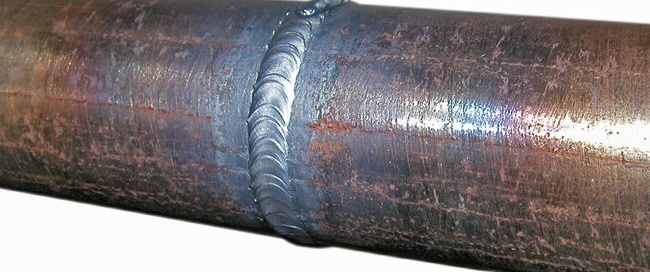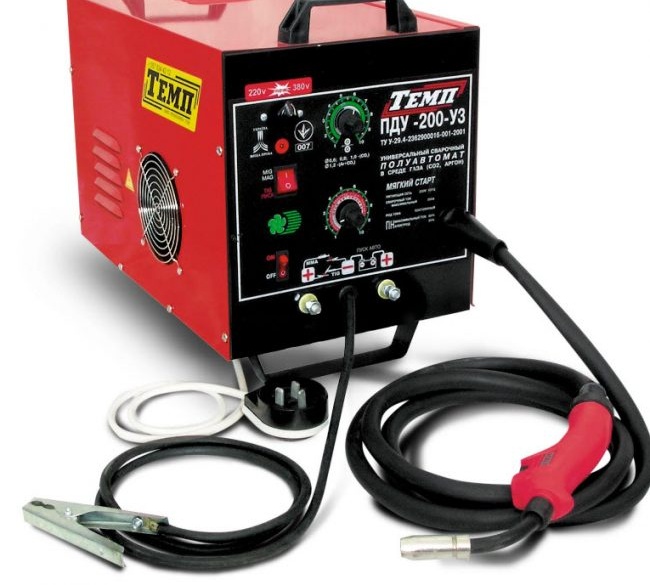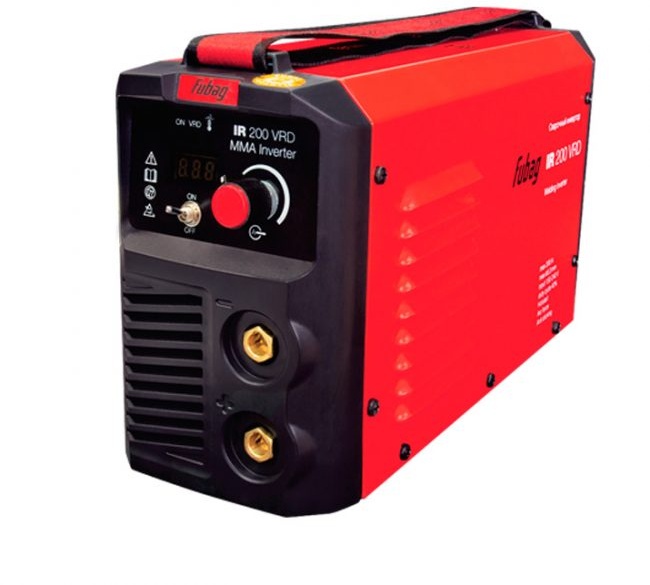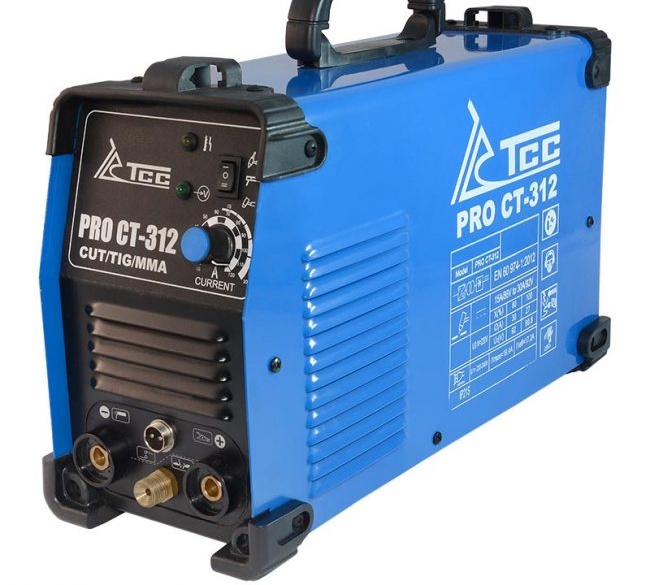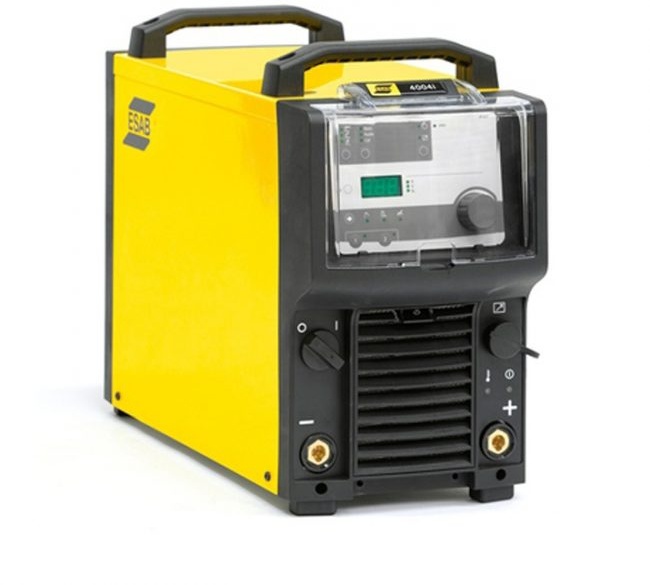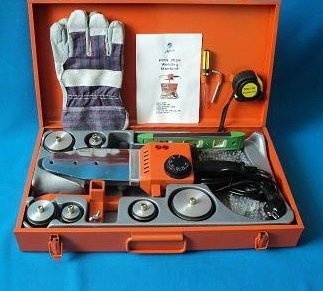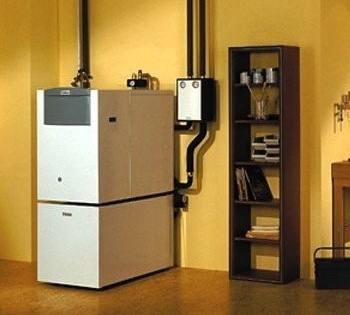How to choose a good welding machine
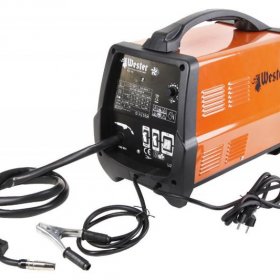
Welding is one of the most common methods that allows you to get a strong one-piece connection of materials. It provides the necessary quality and durability, is fast and does not require complex bulky equipment. The technology is well-established, it is quite simple and accessible to almost anyone who wants to master it. To do the job, only a welding machine and skills are required.
Content
What is welding?
Welding is a technology of joining materials by local heating, which leads to the melt and mixing of the liquid sections together. Using this technique, metal parts or structures are connected, but there are also technologies for welding polymer materials, plastics. The origins of this technique date back to the start of metal use. The first types of welding were worked out during blacksmithing, which was practically the only metal processing method at that time. Electric arc welding, which is still used today, was invented in 1881–1882. Russian scientists Benardos and Slavyanov. Since that time, the process has been actively studied and improved, gradually reaching today's level.
There are different classes and types of welding, determined respectively by the form and type of energy spent on the process.

Most types of welding are carried out using specialized equipment and are used in limited technological processes.
The main distribution is electric arc welding, the simplest applicable to almost all metals, alloys and compounds. The principle of operation is simple - an electric discharge arc is formed between the connected parts, the temperature of which is so high that the material melts. The metal in the heated areas becomes liquid and mixes, as a result of which a monolithic compound is formed at the molecular level. There are many technological options for welding, but the general principle does not change. Advantages of welded joints:
- simplicity, high speed of connection;
- the absence of an increase in the mass of the combined structures;
- independence from the shape or configuration of parts;
- the ability to create a tight seam;
- the process is almost silent;
- there is the possibility of mechanization and automation of the process;
- welding costs are lower than other joining methods.
The disadvantages include:
- the weld and the material surrounding it acquire significant residual stresses.
- parts under the influence of high temperatures change shape and linear dimensions, the plane is broken.
- with vibration or significant mechanical (shock) loads, the reliability of the seams is often insufficient.
- the quality of the weld in manual welding largely depends on the skill level of the worker.
An alternative to welding are bolted or riveted joints, which have a high complexity of execution and require a specific configuration of parts. The high popularity of welding is based on the absence of these disadvantages.
The quality of the seam is determined by its shape, lack of gaps, accuracy.
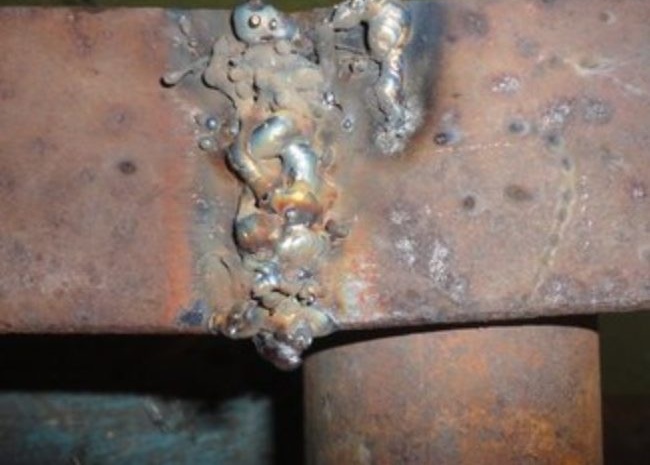
A seam with gaps, defects and bulges makes the surface of the part sloppy and often unsuitable for further use
The main types of welding machines
There are several types of welding machines developed at different times and with certain capabilities.
Welding transformers
One of the oldest and simplest designs. It is a step-down transformer that changes the mains voltage to values suitable for welding. The current is adjusted by changing the distance between the primary and secondary windings. There is an alternating current at the output of the welding transformer, due to which the quality of the seams is rather low, a large amount of spray appears. To weld non-ferrous metals and improve the quality of the arc, significant structural changes are required that increase the size and weight of the apparatus, which is already quite massive.
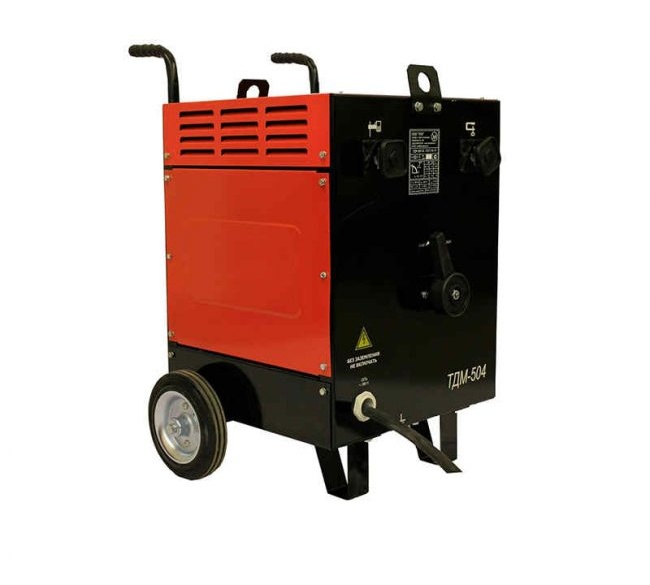
Welding transformers are the cheapest and most reliable, therefore they are still actively used to connect low alloy steel grades
To perform the work, special electrodes for alternating current are needed. To get a decent seam you must have considerable experience and skills. In addition, the operation of the welding transformer significantly affects the mains voltage - it noticeably "sits down", which negatively affects the state of household appliances. The efficiency of transformers reaches 90%, but part of the energy is spent on heating.
Welding rectifiers
Rectifiers appeared later than transformers and allowed to solve many problems that they have. The design of these devices includes a rectifier unit, which converts the alternating current coming from the transformer into direct current. As a result, it becomes possible to carry out more demanding work, brew sealed containers, and to make more accurate and durable seams.
Welding spatter is much less, which allows you to work with the front parts of structures or with parts that need to maintain a flat surface adjacent to the seam. An important advantage of welding rectifiers is the ability to work with any kind of electrodes.
Semiautomatic welding machines
This type of apparatus does not use separate electrodes. The work is carried out using mechanized welding wire feed. There are devices that perform different types of work:
- inert gas cloud welding;
- connection of parts submerged;
- work with flux-cored wire;
- universal devices.
The difference between these devices is the design of the torch, providing wire in parallel with the supply of filler material. The wire feed is made by a special device that ensures uniform receipt of a signal from the torch. There are different options for the feed mechanism:
- push type.Located in front of the burner hose and feed the wire into the channel;
- pulling. They are mounted on the torch and guide the wire into the channel. Their disadvantage consists in increasing the weight of the burner, which the welder has to hold in his hand;
- pulling - pushing type. They are used when welding at a great distance from the apparatus, when the wire has to be fed over a long distance.
Inverters
Inverter is the newest type of welding machine. They use high-frequency currents, which allows you to perform high-quality seams, able to make responsible, tight and accurate connections. Almost all inverters are protected from power surges, from overheating and other changes in the normal operating mode.
The capabilities of the device are much wider than with older varieties of welding machines. Inverters can be used even by beginners, the quality of the seam will be quite decent. There are two technological designs of inverters - MOSFET and IGBT. The first species is older; today it is found only. In Europe, the IGBT technology protocol is used, which ensures compliance with all technical standards and requirements that comply with product certification parameters.
Device Selection Criteria
When choosing this or that equipment, the main criteria are price and quality. If the price is more or less clear, then the category of “quality” for an inexperienced person who does not have professional training or experience, presents some difficulties. Consider the most important quality criteria for welding machines.
Mains voltage
There are devices designed for different operating voltage:
- single phase. Uses ordinary 220 V, which is suitable for homework, but for industrial use is not always convenient;
- three-phase. Supply voltage - 380 V, available at any production, but in a private house it may not be;
- universal. Such devices have the ability to work with single and three-phase power supplies, which allows you to use them in any conditions.
The best option is a universal device that is useful everywhere and is able to work with any power sources.
Power
In the passports of devices there are different power values. There are two types:
- active power. It is indicated in kW;
- apparent power measured in kVA.
You need to know that active power is spent on useful work, while full power is a value that indicates the consumption of equipment. The higher the full power, the stronger the device will load the network.
These two values help to get an idea of the network load and the degree of efficiency of the device. There is also real power, indicating the operational capabilities of the apparatus.
Open circuit voltage
The open circuit voltage should not be lower than 60 V (ideally, as high as possible). Low values indicate significant difficulties when firing the arc, especially on rusty metal or during the initial firing on cold metal. When choosing a device, you need to pay close attention to this value, since the efficiency of the device largely depends on it.
Device Protection Class
The device protection class is indicated in the passport. It is indicated by the letters IP. On average, welding machines have a protection class from IP21 to IP23. The first digit means the restriction of the size of objects that can penetrate the case up to 12 mm, in this case there is the possibility of penetration of dust, small particles. The second digit indicates the level of moisture protection - 1 guarantees protection against vertical rain drops, and 3 means that drops do not penetrate into the body at an angle of up to 60 °. The degree of protection is important, although cooking in the rain is not permitted.Nevertheless, if the device remained in the open air and it started to rain, you can have an idea of its capabilities.
Performance (length of time)
An important value indicating the length of the machine’s working hours. More precisely, the determining ratio of the duration of work and downtime. It is indicated as a percentage, which should be understood as follows: suppose the value of the TAC indicated in the passport is 30%. This means that after 3 minutes of operation, the device will turn off for 7 minutes, although in practice this happens extremely rarely, since it is necessary to clean off the slag, control the quality of the seam, and move from place to place. The PVR value for European devices is measured at a temperature of + 40 °, and for Chinese devices - about + 20 °, therefore the degree of operability is higher for "Europeans".
Temperature limits
According to GOST, welding can be performed at temperatures from -40 ° to + 40 °. In practice, the situation is more complicated, since in extreme heat it is impossible to work, and at subzero temperatures, many devices refuse to work, including an overload signal.
Ability to work from a generator
The presence of this function means that the device is able to work from a generator and this greatly expands its capabilities. Often there is a need to weld in a field where there is no network connection, and power from the generator is not suitable for every device.
Additional features
Additional features include:
- hot start. A short-term increase in the current strength is performed to create the best conditions for the appearance of an arc;
- afterburner of the arc. In the event of an interruption or instability of the arc, an increase in current is performed, which ensures stability and preservation of the optimal parameters of the welded work;
- electrode sticking. The current and voltage are discharged at which the electrode freely moves away from the seam. As soon as this happens, the current parameters return to certain positions.
Manufacturer
Welding machines are widely in demand and are in high demand. They are produced in almost all countries. When considering a country of origin, certain features must be kept in mind. Russian devices have a very good combination of price and quality, are able to perform all the necessary work, but are inferior in quality to European models. Technical regulations in force in Europe require manufacturers to ensure maximum product quality. Chinese devices can have both very high and very low quality, the acquisition of such equipment is always a somewhat risky event. Devices originally from the United States have an excellent ratio of quality and price, although it is not always possible to find American samples on sale.
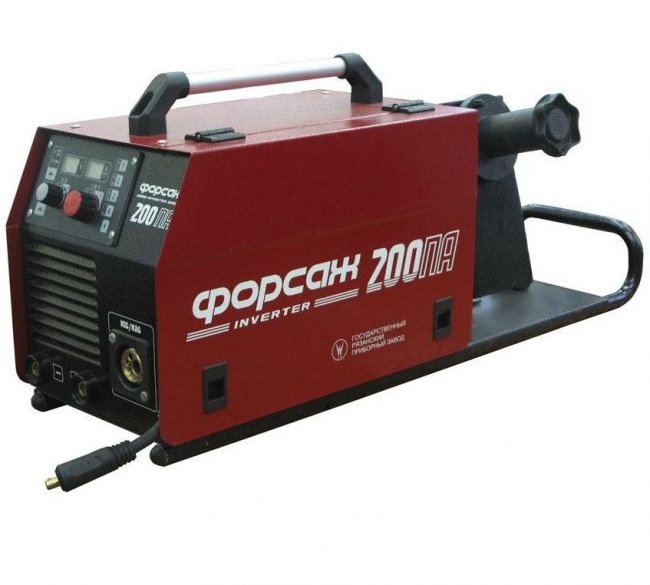
Devices with the maximum range of options and capabilities are designed for continuous and voluminous work.
Nuances of welding machine selection
When choosing a welding machine, one should take into account the nature of the work performed and what conditions exist for this. The type of metals, the voltage in the network, the condition of the wiring, the volume and duration of work - all these factors affect the choice of a certain type and brand of apparatus. The main selection criterion is the place of use.
For work in the country or in a private house, you must choose a device that can withstand voltage surges, operating from 220 V (single-phase or universal device). The volume of work is small, so there is no need to strive for high TAC.
The welding machine, which is purchased for production purposes, should be designed to be powered from a three-phase source (or station wagon), an important indicator will be the great importance of the PVR and power.
Work safety rules
Safety rules related to the features and design of a specific model of the welding machine are described in detail in the instructions.However, there are general safety requirements that apply to all such cases:
- when performing welding work, you should wear closed tight clothing (optimally - a welder’s special suit) that does not have patch pockets;
- during work, it is necessary to use a mask;
- it is forbidden to work in rain or wet weather;
- touching current-carrying parts should be avoided;
- Do not work while inside containers containing vapors or residues of flammable liquids;
- Periodically check the condition of the cable, as well as the insulation resistance between the apparatus body and the windings.
The full list of safety rules is wide, but compliance with all requirements is mandatory. The health and even the life of the welder, as well as the people around him, depend on this.
Rating of the best models
To make the choice of the device easier, it is recommended that you familiarize yourself with the most popular models of welding machines among users.
The table shows that there are expensive options and quite affordable, the main factors are the purpose of the device and the upcoming workload.
In our next article you will find a detailed welding guide: how to light and maintain an arc, how to make seams and much more: https://aquatech.tomathouse.com/en/uchebnik/svarka/kak-pravilno-varit-elektrosvarkoj.html.
The choice of a welding machine is made according to various criteria, covering all aspects of the operation of the device, depending on the amount of work and other conditions. For an unprepared person it can be difficult to take into account all the important factors and qualities of the device. In case of difficulties, you can contact the sales consultant, and best of all, invite an experienced welder to the store to help you decide on the most suitable model of the welding machine.
